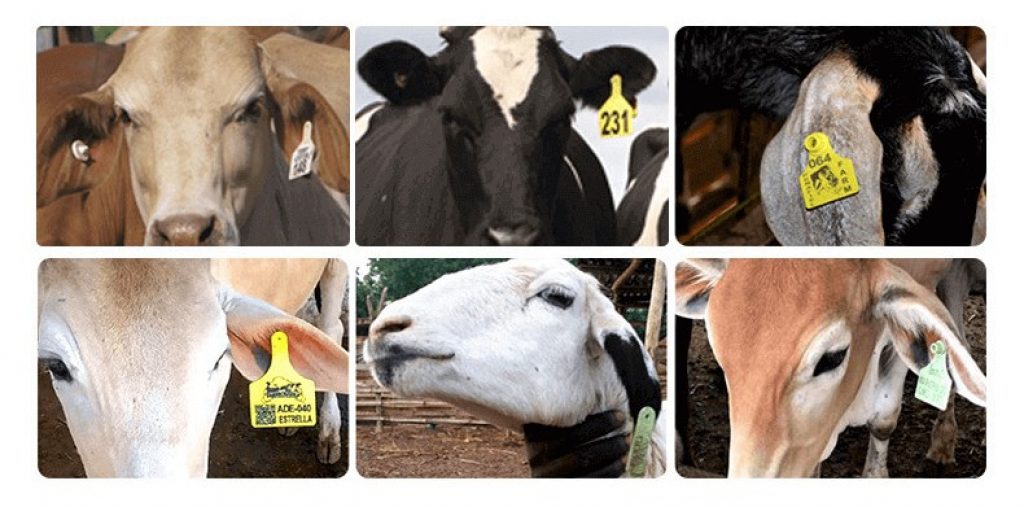In recent years, the world has witnessed a series of animal epidemics, including dreaded names like mad cow disease, foot-and-mouth disease, and bird flu, which have wreaked havoc on people’s health and livelihoods. The gravity of these outbreaks has prompted governments worldwide, particularly in Europe, to take swift action. Among the arsenal of measures used to combat these threats, RFID (Radio-Frequency Identification) technology has emerged as a game-changing solution, revolutionizing the management of animals.


The Role of RFID cattle tag in Animal Tracking & Identification
The global implementation of RFID cattle tag technology has proven to be instrumental in identifying and tracking animals, serving as a robust tool to control and supervise the spread of exotic animal diseases. This technology not only protects native species but also safeguards international trade in animal products. Furthermore, it enhances the ability to diagnose and report animal diseases, enabling swift responses to animal epidemics both domestically and abroad.
RFID’s Pioneering Journey
The origins of RFID cattle tag technology in animal management can be traced back to the identification of racehorses. Tiny RFID tags, encapsulated in glass bottles, were discreetly placed under the skin of racehorses, serving as a reliable method to confirm their identity. This groundbreaking development paved the way for the modernization of animal management.
Diverse Applications of RFID in Animal Identification and Tracking
The application of RFID cattle tag technology has significantly evolved, offering comprehensive solutions for animal management across various domains.
Animal Husbandry Management
The beauty of RFID cattle tag technology lies in its non-contact identification capabilities. With impeccable anti-interference performance and a long service life, RFID finds its ideal habitat in the realm of animal husbandry. It seamlessly addresses issues such as information input, transmission, logistics tracking, and data retrieval.
Production Link
RFID technology begins its journey in livestock production by installing RFID cattle tag on animals. These tags serve as permanent digital records, capturing unique identification attributes for each animal. These attributes include crucial information such as the owner’s details, characteristics, immunity records, vaccine specifics, manufacturer details, and more. All this information can be efficiently retrieved using handheld data collectors, providing essential data for livestock management.
Distribution Link
RFID cattle tag is a key player in establishing a traceability system in the food supply chain for animal husbandry. Throughout the process of slaughtering livestock and poultry, RFID technology verifies the health of animals, seamlessly integrating with slaughterhouse management systems. All relevant data is then incorporated into the meat supervision platform, ensuring product quality and safety.
Consumption Link
When it comes to the consumption of animal husbandry products, RFID technology enhances logistics efficiency. Consumers can access vital information about the product, including its origin, manufacturer details, production date, shelf life, and relevant safety certifications, simply by reading the RFID cattle tag on the products. This not only ensures food safety but also fosters transparency in the animal husbandry industry.
Pet Management
In many countries and regions, RFID electronic tagging for pets is becoming a standard practice. This technology offers accurate and efficient tracking and information retrieval for pets. Each pet implanted with an RFID chip carries a globally unique identification number (UID), serving as a lifelong electronic ID card. The chip stores essential details about the pet, including name, type, gender, date of birth, and the owner’s contact information.
Pet regulators, hospitals, and pet owners can access this information swiftly by scanning the RFID animal tag, enabling efficient pet management, including vaccination, feeding, and lost pet retrieval.
Quarantine Information Inquiry
In addition to basic pet information, RFID technology also records the type and timing of pet vaccinations. However, this data is accessible only to authorized pet supervision and epidemic prevention departments, ensuring that vaccination records remain secure and accurate.
Pet Tracking and Query
The use of RFID technology in tracking and retrieving lost pets has proven invaluable. Stray pet shelters equipped with RFID readers can quickly identify lost pets and contact their owners for prompt reunification. For those who have lost their pets, the RFID system provides an online platform to publish lost pet information and facilitate their recovery.
Information Sharing
The open nature of pet chip data allows pet supervision departments, epidemic prevention departments, pet hospitals, pet shops, and pet owners to easily share pet information. This streamlined communication greatly benefits pet management, vaccination, and other pet-related services.
Common RFID Animal Tags
RFID animal electronic tags come in various forms, each catering to specific animal management needs. These tags serve as repositories for a wide range of animal information and carry a unique 64-bit identification code, strictly following ISO standards.
- Neck Collar Type: These tags are suitable for larger animals and provide effective tracking and recognition capabilities.
- Ear Tag: RFID cattle tag offer a convenient method for identifying and tracking animals, particularly in livestock management.
- Injection Electronic Tags: This relatively new form of RFID tags involves inserting small RFID chips under an animal’s skin, allowing for secure and long-term identification.
- Pill Tags: These tags encapsulate RFID chips in acid-resistant containers and are ingested by the animal, offering a simple yet reliable method for tracking.
- Pigeon Tags: Specifically designed for poultry and birds, these tags are attached to leg bands and enable easy tracking without the risk of detachment.
- Epoxy Tags: Popular in pet identification and tracking, these RFID tags are small, durable, and customizable, making them an excellent choice for pet owners.
- Collar Electronic Tags: Suitable for automatic feed rationing in stables, these tags are easily transferable between animals, making them an essential component in livestock management.
Conclusion
In the realm of animal husbandry management, the integration of RFID technology is a visionary solution. By using RFID cattle tag as carriers and harnessing the power of modern computer network technology, the livestock industry has achieved integrated monitoring, ensuring the welfare and productivity of animals from birth to consumption. The use of RFID technology is a pivotal step toward the intelligent management of animal husbandry, promising a brighter future for the industry.
Innovations in Animal Management and Beyond
In the fast-evolving landscape of animal management, RFID technology continues to break new ground. Whether it’s optimizing livestock farming, enhancing pet security, or safeguarding the health of our animal companions, RFID cattle tag is at the forefront of innovation. The possibilities are endless, and the future holds exciting prospects for the world of animal management.
















